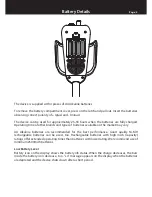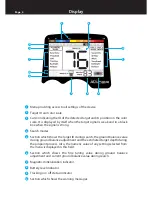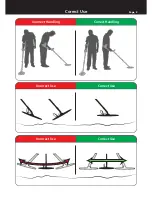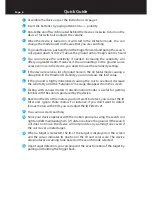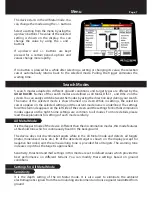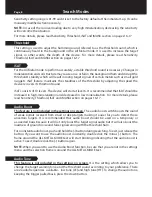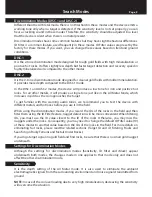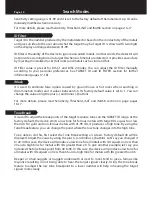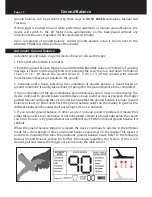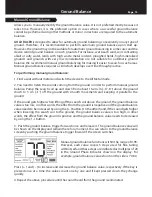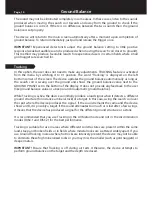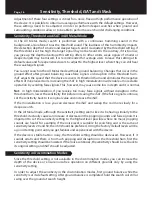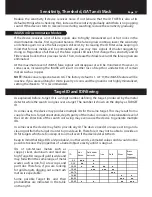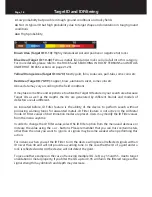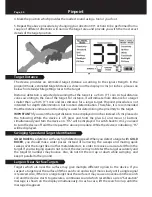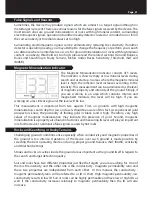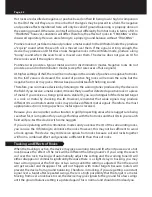
Reduce the sensitivity if device receives noise. If not (ensure that the ID FILTER is also at its
default settings when checking this), increase the sensitivity gradually until there is no popping
sound. If the device starts to receive noise during searching, reduce the sensitivity gradually.
If the device receives a lot of false signals due to highly mineralized soil or hot rocks in the
discrimination modes, first re-ground balance. If the false signals continue, lower the sensitivity
and check again. In case the false signals still exist, try increasing the ID Filter value keeping in
mind that ferrous metals will be eliminated and you may miss signals of smaller nuggets by
doing so. Regardless of all these, if the false signals still exist, first change the sensitivity and ID
Filter values back to their previous levels. Then, increase the iMask level until the false signals are
eliminated.
At the maximum level of iMASK, false signals will disappear or will be minimized. However, in
some cases, increasing the iMASK will result in either loss of depth or undetection of certain
metals such as copper.
NOTE:
iMask value ranges between 0-6. The factory default is 1. At ''0'', the iMASK feature will be
inactive. If you are searching for micro jewelry or coins and the ground is not highly mineralized,
setting the iMask to ''0'' is recommended.
iMASK in Discrimination Modes
Target ID and ID Filtering
Page_17
As explained before, target ID is a 2 digit number defining the target, produced by the metal
detector while the search coil goes over a target The number is shown on the display as TARGET
ID.
In some cases, the device may produce multiple IDs for the same target. This may result from a
couple of factors. Target orientation, depth, purity of the metal, corrosion, mineralization level of
the soil etc. Direction of the search coil swing may even cause the device to generate multiple
IDs.
In some cases the device may fail to provide any ID. The device needs to receive a strong and a
clear signal from the target in order to provide an ID. Therefore, it may not be able to provide an
ID for targets which are too deep or too small even if the device detects them.
Keep in mind that target IDs are “probable”, in other words, estimated values and it would not be
possible to know the properties of a buried object exactly until it is dug out.
IDs of non-ferrous metals such as
copper, silver, aluminum and lead are
high. Target ID range of gold is wide and
may fall within the same range of metal
wastes such as iron, foil, screw caps, and
pull tabs. Therefore, if you are looking
for gold targets, digging out some trash
metals is expectable.
Some possible Target IDs and their
probabilities are indicated in the table
on the right:
Sensitivity, Threshold, iSAT and iMask
0-5
●●●
●
5-10
●●
●
10-20
●
●●
●●
●
20-40
●●●
●●●
●●
40-70
●●●
70-80
●
●
80-90
●●●
●●
90-99
●
●
●●
●●●
Gold under
hot rocks
Brass
Copper
Aluminum
ID
Hot
Rocks
Iron
Gold
Silver

